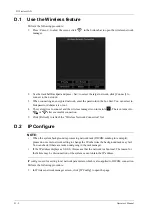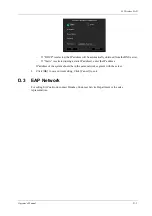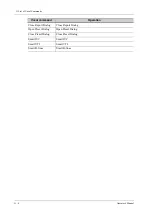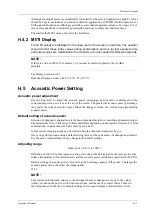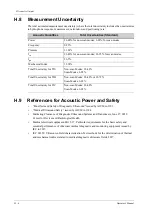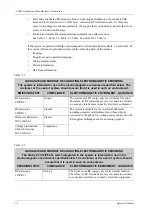
H - 2
Operator’s Manual
H Acoustic Output
Additional information regarding the concept of ALARA and the possible bioeffects of Ultrasound is
available in a document from the AIUM (American Institute of Ultrasound Medicine) title
“Medical
Ultrasound Safety”.
H.4
MI/TI Explanation
H.4.1 Basic Knowledge of MI and TI
Mechanical Bioeffect and Thermal Bioeffect
The relationship of various ultrasound output parameters (frequency, acoustic pressure and
intensity, etc.) to bioeffects is not fully understood presently. It is recognized that two fundamental
mechanisms may induce bioeffects. One is a thermal bioeffect with tissue absorption of ultrasound,
and another one is a mechanical bioeffect based on cavitations. Thermal Index (TI) gives the
relative index of temperature increase by thermal bioeffect, and Mechanical Index (MI) gives the
relative index of mechanical bioeffect. TI and MI indices reflect instantaneous output conditions, so
they DO NOT consider the cumulative effects of the total examination time. TI and MI models
contain practical simplifications to complex bioeffects interaction. Then the operator should be
aware that the actual worst case temperature rise may be up to several times higher than the
displayed TI value.
MI (Mechanical Index)
The mechanical bioeffects are the result of compression and decompression of insonated tissues
with the formation of micro bubbles that may be referred to as cavitations.
MI is an index that shows the possibility of the cavitations generation based on acoustic pressure,
and the value in which the peak-rarefactional acoustic pressure is divided by the square root of the
frequency. Therefore MI value becomes smaller when the frequency is higher or the peak-
rarefactional acoustic pressure is lower, it becomes difficult to generate the cavitations.
C
MI
= 1 (MPa /
)
For the frequency 1 MHz and the peak rarefactional acoustic pressure 1 MPa, MI becomes 1. It is
possible to think MI to be one threshold of the cavitations generation. Especially, it is important to
keep MI value to be low when both gases and the soft tissues exist together, for such as lung
exposure in cardiac scanning and bowel gas in abdominal scanning.
TI (Thermal Index)
TI is determined by the ratio of the total acoustic power to the acoustic power required to raise the
tissue temperature by 1 degree C. In addition, because the temperature rises is greatly different
according to tissue structures, TI is divided three kinds: TIS (Soft-tissue Thermal Index), TIB
(Bone Thermal Index) and TIC (Cranial-bone Thermal Index).
•
TIS: Thermal index related to soft tissues, such as abdominal and cardiac applications.
•
TIB: Thermal index for applications, such as fetal (second and third trimester) or neonatal
cephalic (through the fontanel), in which the ultrasound beam passes through soft tissue and a
focal region is in the immediate vicinity of bone.
•
TIC: Thermal index for applications, such as pediatric and adult cranial applications, in which
the ultrasound beam passes through bone near the beam entrance into the body.
MI
Pr
α
,
fawf CMI
×
----------------------------------
=
MHz
Содержание Ana
Страница 2: ......
Страница 50: ...This page intentionally left blank...
Страница 60: ...This page intentionally left blank...
Страница 110: ...This page intentionally left blank...
Страница 116: ...This page intentionally left blank...
Страница 166: ...This page intentionally left blank...
Страница 176: ...This page intentionally left blank...
Страница 194: ...This page intentionally left blank...
Страница 220: ...This page intentionally left blank...
Страница 288: ...This page intentionally left blank...
Страница 304: ...This page intentionally left blank...
Страница 308: ...This page intentionally left blank...
Страница 316: ...This page intentionally left blank...
Страница 337: ......
Страница 338: ...P N 046 018835 00 2 0...



